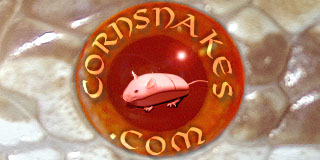Wow I never knew you knew so much about venom first aid! When I go on mission trips for church we life lots of boards and we use an old field guide for snake bite could you post an in depth thread about venom treatment
No, I can't. I am not a medical expert, nor am I an herpetologist or a venom expert. Too many people might mistake my opinion for medical fact, and it simply isn't. It's a theory. Granted, it is a theory that has been discussed in the scientific community, and one which I hold true for myself...but a theory, none-the-less.
What you need to do is sit down with a doctor that has treated envenomation, read as much as possible about different venom properties, and what the effects of treatment are on you're body, and set a protocol in place for if/when you get bitten.
I have talked with Wilderness EMT's, venom specialist doctors, ER doctors, snake lovers, and long time field herpers. I have discussed treatment options with all of them, especially the ones that were bitten. I have protocols in place in the event I am bitten based on these discussions, and on what I have read online.
For emergency response to a crotalus or agkistrodon bite, it's simple...be calm, get to the hospital. Do not do ANYTHING to the wound or bite site. You can use clean, bottled water to rinse any surface venom away, but do not rub the bite site. Do not try to suck the venom out. Do not apply compression. Do not attempt to cut the bite site to remove venom. Do not apply ice.
In short...don't do anything but get to a hospital as quickly and as calmly as possible.
The reality is simple...most NA viper bites do not prove fatal with treatment. Most of the methods described in older field guides for field treatment have proven to cause more damage than good. For example...sucking out the venom can rupture blood vessels, which allows the venom to actually get into the blood stream through multiple sites. Same is true for cutting the bite site. Rubbing the bite site to clean off the wound actually massages the muscles and blood vessels, creating a faster flow of blood and quicker spread of venom. Applying compression we discussed. Applying ice causes a restriction of blood flow which causes similar effects to compression.
The best thing to do is to remain calm, call ahead to the hospital to inform them you have been bitten and by what, and get to the ER asap.
This is true of NA vipers. Obviously that does not include coral snakes, or South American pit vipers. It would be wise to research these animals on your own.
Toxinology.com is a fantastic site by the University of Adelaide in Australia, and contains a tremendous amount of information, based on species, about venom toxicity, properties, potency, volume, fatality, and treatment, including emergency first aid. I suggest anyone dealing with hots in captivity or in the field become familiar with it.
